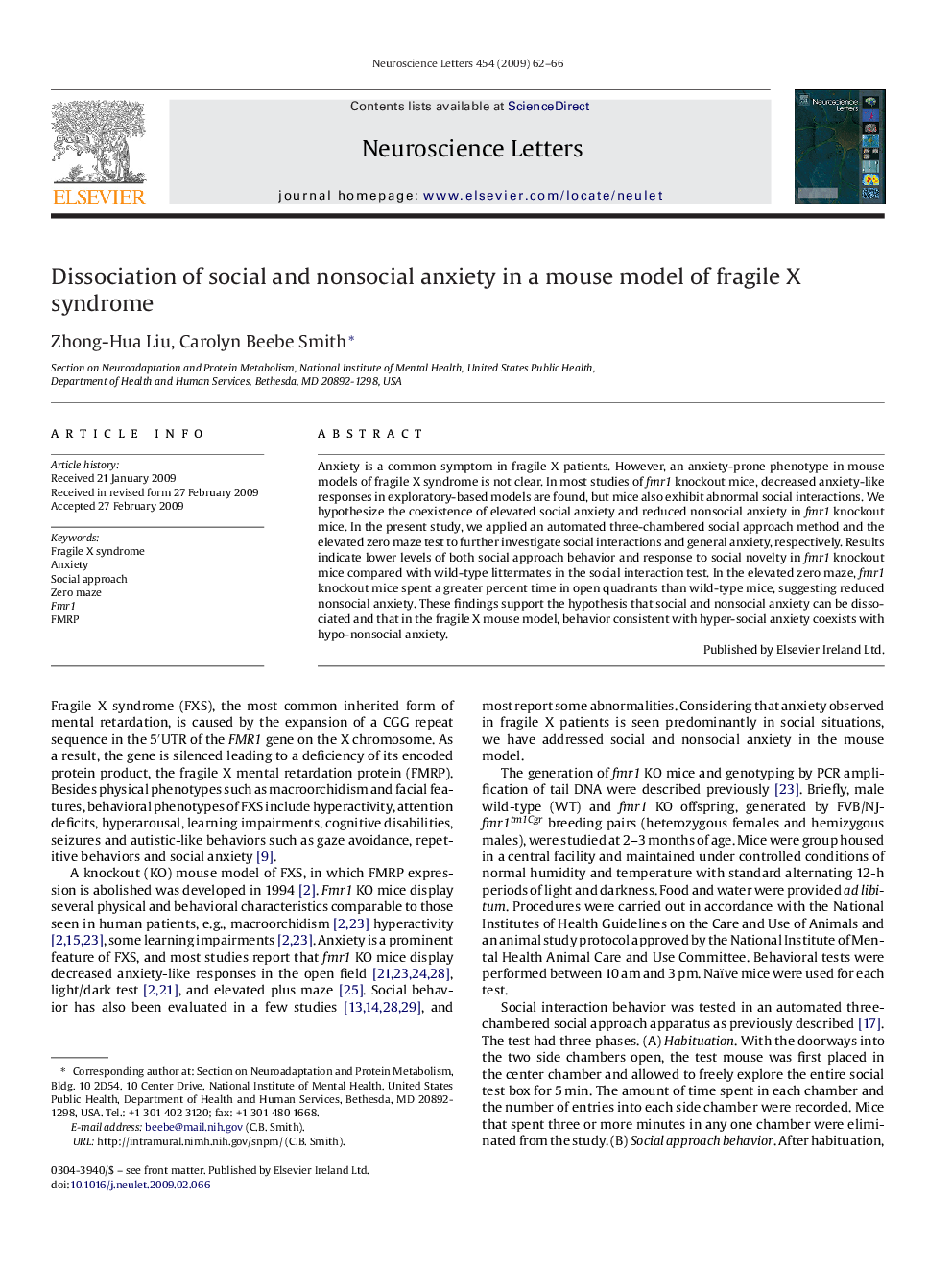| Article ID | Journal | Published Year | Pages | File Type |
|---|---|---|---|---|
| 4347293 | Neuroscience Letters | 2009 | 5 Pages |
Abstract
Anxiety is a common symptom in fragile X patients. However, an anxiety-prone phenotype in mouse models of fragile X syndrome is not clear. In most studies of fmr1 knockout mice, decreased anxiety-like responses in exploratory-based models are found, but mice also exhibit abnormal social interactions. We hypothesize the coexistence of elevated social anxiety and reduced nonsocial anxiety in fmr1 knockout mice. In the present study, we applied an automated three-chambered social approach method and the elevated zero maze test to further investigate social interactions and general anxiety, respectively. Results indicate lower levels of both social approach behavior and response to social novelty in fmr1 knockout mice compared with wild-type littermates in the social interaction test. In the elevated zero maze, fmr1 knockout mice spent a greater percent time in open quadrants than wild-type mice, suggesting reduced nonsocial anxiety. These findings support the hypothesis that social and nonsocial anxiety can be dissociated and that in the fragile X mouse model, behavior consistent with hyper-social anxiety coexists with hypo-nonsocial anxiety.
Related Topics
Life Sciences
Neuroscience
Neuroscience (General)
Authors
Zhong-Hua Liu, Carolyn Beebe Smith,
